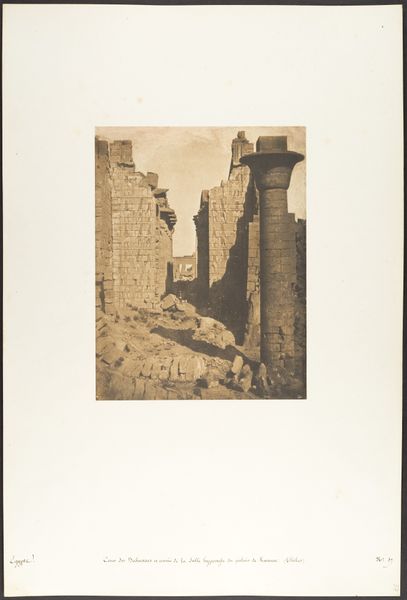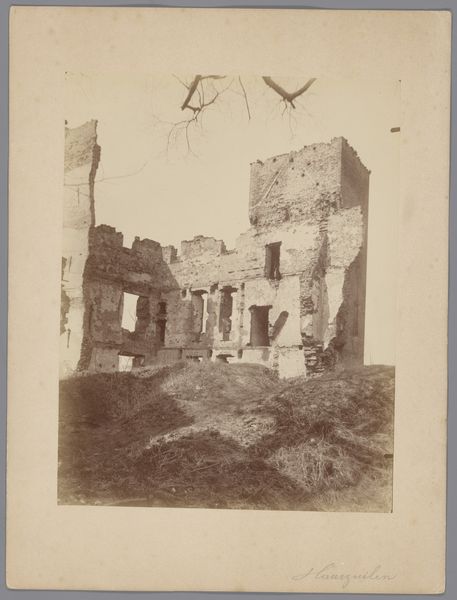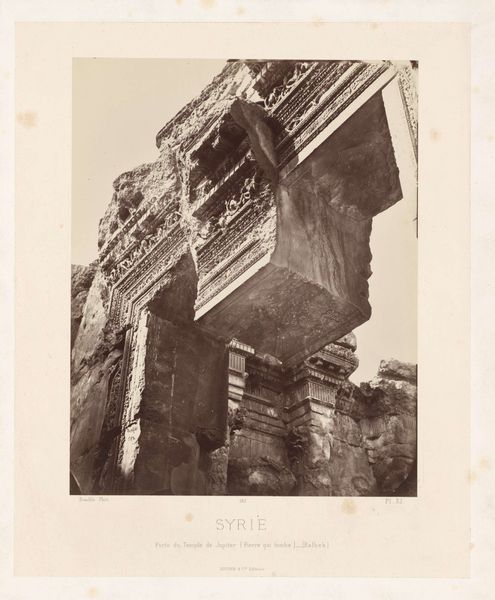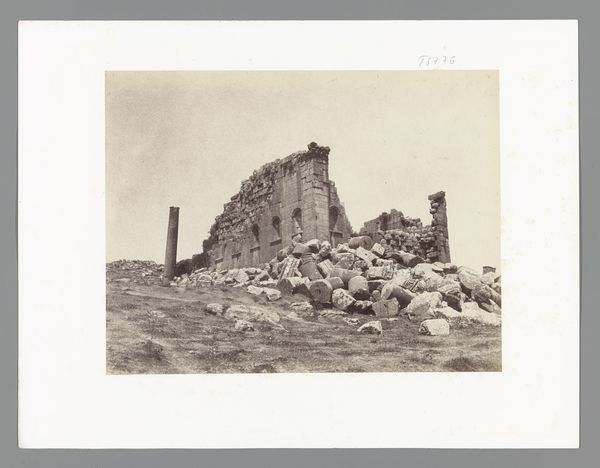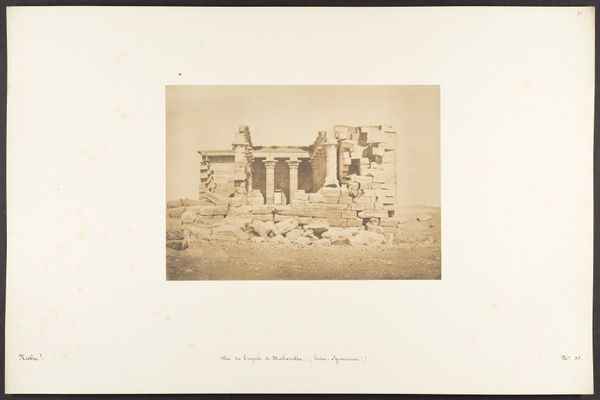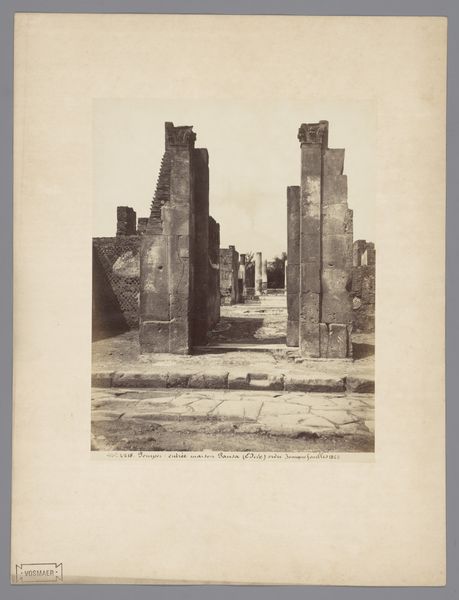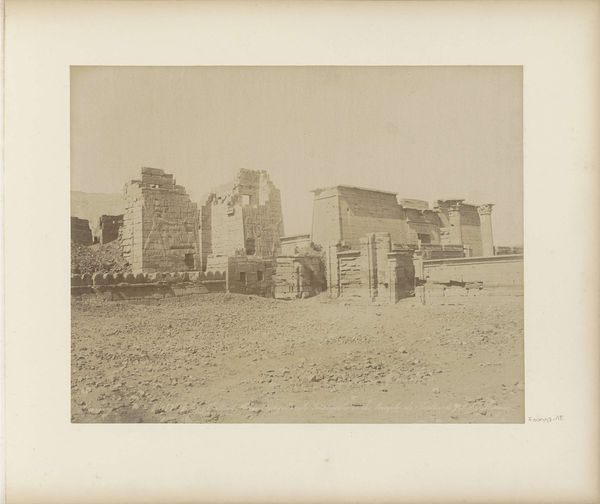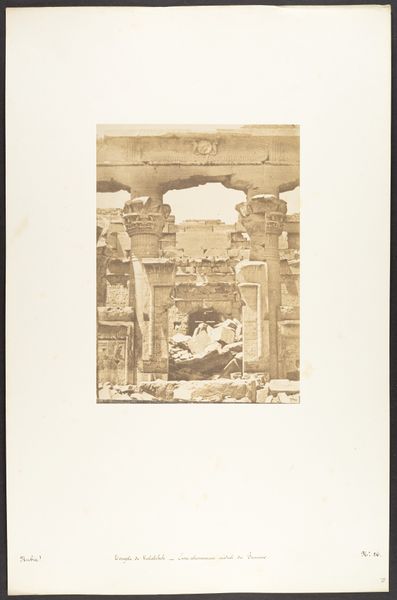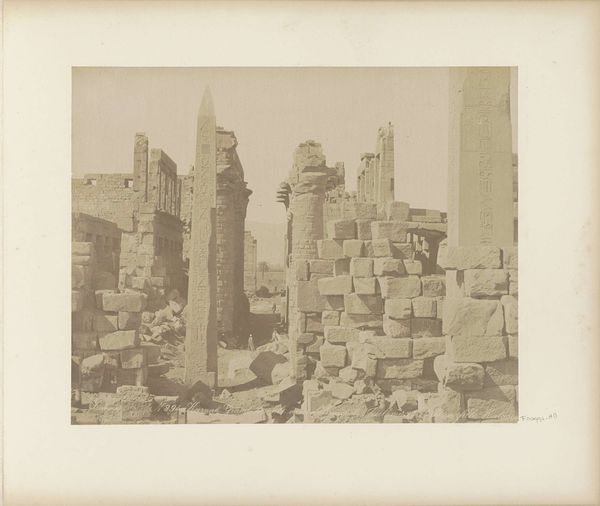
Façade latérale du Gynecée de Rhamsès-Meiamoun, Palais de Médinet-Habou, à Thèbes 1849 - 1850
0:00
0:00
photography, architecture
#
landscape
#
ancient-egyptian-art
#
photography
#
ancient-mediterranean
#
architecture
Dimensions: Image: 9 in. × 6 9/16 in. (22.8 × 16.7 cm) Mount: 12 5/16 × 18 11/16 in. (31.2 × 47.5 cm)
Copyright: Public Domain
Editor: So, this is Maxime Du Camp's photograph, "Facade latérale du Gynecée de Rhamsès-Meiamoun, Palais de Médinet-Habou, à Thèbes," taken between 1849 and 1850. It's a view of an ancient Egyptian structure, incredibly weathered. It has this overwhelming sense of the past, like the stones are whispering secrets. How do you interpret this work? Curator: It speaks to the enduring power of symbols, doesn't it? Even in ruins, the architecture retains cultural memory. What catches my eye is the presence of implied feminine space indicated in the title. What does the term Gynecée conjure for you? Editor: I immediately think of ancient Greek spaces dedicated to women... a sense of intimacy, perhaps restriction? It feels odd to apply that to an Egyptian context, yet compelling at the same time. Curator: Exactly! This photograph then becomes a layered cultural artifact, doesn't it? It documents Egyptian architecture through a 19th-century lens, filtered by classical Greek concepts, reflecting how European photographers at the time imposed their cultural understanding onto other civilisations. Notice the careful positioning of light and shadow. Does it evoke certain feelings? Editor: A sense of decay, definitely. But also resilience, I think, in how the structure is still standing after millennia. The play of light suggests almost a sacredness about it. Is it just the light or is there something about the composition too? Curator: Perhaps. Consider how Du Camp, with his wet collodion process, has framed the remaining walls to focus the attention on this opening within, drawing viewers towards imagining the lost stories from within. This approach subtly shapes our interpretation. This is more than mere documentation; it is an encoding of an historical perception of ancient cultural spaces. Editor: I see. So, it's not just about capturing an image, but about the photographer's own cultural baggage and the power of that baggage to influence how we, in turn, view that culture. It adds a lot of weight to what seems like a straightforward image. Curator: Indeed, a vital lesson for approaching visual culture! This interplay highlights how visual media always communicates layers of meaning.
Comments
No comments
Be the first to comment and join the conversation on the ultimate creative platform.
